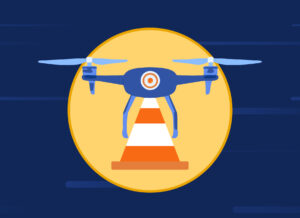Robotic Process Automation (RPA) brings value in terms of data collection, aggregation and analysis, document processing, claims processing, and delivering better customer service through call center automation—exactly the kinds of functions government agencies need to perform. RPA has delivered a tremendous value to public sector organizations in back office automation, but recently state and local governments are showing interest in using RPA to address challenges intrinsic to their mission and solving larger problems in public sector.
Diving Deeper into RPA’s Capabilities
Federal, state, and local government agencies have rapidly increased their adoption of RPA, particularly recently since the pandemic is requiring employees to work from home and has created significant backlogs. State governments, in particular, have used RPA in areas such as unemployment claims, SNAP program claims, HHS, Department of Motor Vehicles processes, and many other sectors.
RPA adoption follows a predictable pattern. Agencies initially automate back office functions, such as HR, finance, IT services, supply chain, etc. Once staff understand the technology’s time to value and see how easy it is to implement, they often expand its use to include operations, direct customer service and support, claims, and document processing—and eventually expand it into mission automation.
Ultimately staff creates a demand across the agency where multiple functional areas all are starting to roll out their own RPA environments—perhaps under the supervision of the IT department or a Center of Excellence. At that point, agencies begin to view RPA not as a set of technology tools, but as a true enterprise capability that can drive enterprise scale. Such agencies want to have an operating model, governance, and plan to prioritize how to get the greatest value from their automation in the shortest period of time.
Government agencies tend to be very judicious and intentional in their vetting and adoption of new technology, but the RPA technology has been quickly adopted at enterprise scale. Procurement processes that usually take 24 to 36 months are sometimes less than a year. Very large federal and state agencies have deployed RPA much more quickly than other technologies—testifying to RPA’s ease of use and simplicity as well as its incredible value.
 AI in the Workplace of the Future
AI in the Workplace of the Future
Government staff have been trying to figure out how to deploy AI in a meaningful way, allowing employees to work more efficiently and better serve constituents. RPA is the gateway for easy and meaningful AI use. Agencies can build AI and machine learning into an RPA workflow for an image or document, process steps in a claim, implementation of a chat bot, assistance in a call center, etc. For example, RPA working with AI can read a claim document (even handwritten ones), make sure it’s valid, check it in multiples systems, and ensure it is sent to the right person.
Effective AI requires data collection and aggregation, making decisions with large amounts of data. But the data must be normalized, cleaned, standardized, and error-free—processes RPA can perform. RPA can reach into those datasets, clean the data, aggregate it from various locations, feed it into an AI model, and then take action based on the information that is produced.
Addressing Fraud, Waste and Abuse
AI in conjunction with RPA can save government organizations billions of dollars. Much of today’s waste, fraud, and abuse auditing is done after money has already been sent—since governments are required to pay out claims within a certain amount of time. Agencies do not have enough people to analyze all the payments to ensure accuracy, so the claims are audited post-payment to determine if they are valid. With automation and AI, agencies can examine many more of the claims than would be possible manually. This allows a thorough and proactive process that eliminates fraud before the claims are paid.
RPA for Help Desks
Many agencies are migrating on-premises help desks to cloud-based systems. This is often a manual effort and very time-consuming because agencies must run systems in parallel for longer than they expect, requiring them to pay for maintenance and infrastructure for multiple systems.
However, agencies can realize a greater ROI on their cloud investment by automating much of that transition process. RPA can automate the actual integration between the two systems during the migration while also doing handoffs from the on-prem system to the cloud system; this facilitates internal customer service tickets on the legacy system as they’re migrated to the new system.
A Robot for Every Person
RPA is so intuitive that employees who are closest to the work and who actually process the workflows have the ability to build their own automations: a robot for every person. Once agency staff understand RPA’s ease of use and the time of value, they start to devise new ideas to drive efficiencies. It empowers the workforce and dramatically improves morale.
This technology could be deployed on every desktop within the government, essentially giving every employee a digital assistant that can automate repetitive, mundane tasks. If you can save each employee a few minutes a day and scale that across the entire agency, the savings are hundreds of millions of dollars. “A robot for every person” is a powerful idea that more and more public sector organizations are exploring.
Download our resource to find out why agencies are overwhelmingly using RPA vendor UiPath’s seamless integration as they incorporate digital technologies such as chatbots, ML, and AI.







